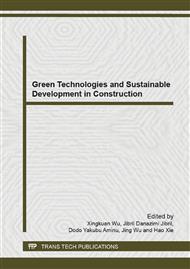p.3
p.8
p.12
p.18
p.23
p.27
p.34
p.38
Climatic-Adaptability Solution in Traditional Architectural of Desert Areas of Iran/Kashan
Abstract:
Nowadays, the shortages of fossil based energy on the earth and the pollution caused by using them is a noticeable problem that people are challenging with. As a result, human try to use natural resources vastly instead of fossil-based ones to reduce their consumption dramatically. In this circumstance, the role of architects are more important than ever in reducing the need for energy by proper designing likewise the past construction history. Green building design criteria emphasizes the energy-efficient performance of fenestration materials. Iran is a country comprising of four main different climatic areas. Selecting materials and using proper techniques for a building project is a challenging task in each part. Ancient buildings were built by different materials, techniques and forms in different parts of this country. One of the main parts of climatic areas in Iran is the hot and dry climates such as deserts. The appropriate materials and techniques which were used in ancient buildings in this part of the country to make this area comfortable for people will be investigated in this paper. Moreover, the buildings of Kashan, located in the desert part of Iran, will be mentioned as case study.
Info:
Periodical:
Pages:
18-22
Citation:
Online since:
May 2014
Authors:
Keywords:
Price:
Сopyright:
© 2014 Trans Tech Publications Ltd. All Rights Reserved
Share:
Citation:


